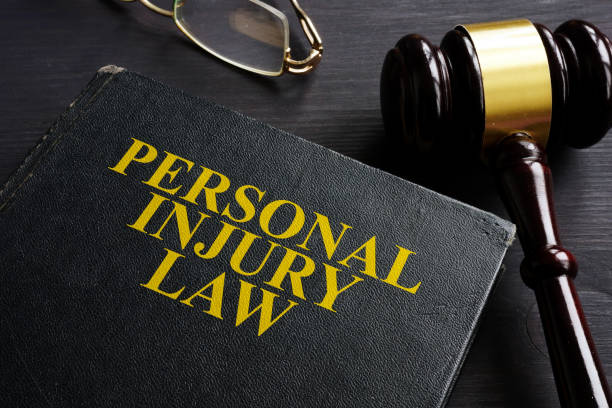The Personal Injury Case Process: From Consultation to Compensation
Navigating a personal injury case can feel overwhelming, especially when you’re dealing with medical bills and recovery. Understanding the legal process can ease your anxiety and help you prepare for what lies ahead. From the initial consultation to receiving compensation, this guide outlines the key steps in a personal injury case, offering clarity on what to expect. By knowing the process, you can approach your claim with confidence, whether it’s a car accident or a workplace injury. Here’s a breakdown of the journey to justice and recovery.
Step 1: Initial Consultation and Case Evaluation
The personal injury process begins with a free consultation, where you discuss your case with a lawyer. This meeting, often offered at no cost, allows the lawyer to assess whether your claim is viable. You’ll share details about the accident, your injuries, and any evidence, such as medical bills or photos. The lawyer will evaluate factors like liability (who’s at fault) and potential damages (e.g., medical costs or lost wages).
During the consultation, you can ask questions about the process, fees, and outcomes. The lawyer may explain the strength of your case and outline next steps. This no-obligation meeting helps you decide whether to proceed without financial risk. It’s also a chance to gauge the lawyer’s communication style and expertise, ensuring they’re a good fit for your needs.
Step 2: Gathering Evidence to Build Your Case
Once you hire a lawyer, they start collecting evidence to support your claim. Strong evidence is crucial for proving negligence and securing fair compensation. Common types of evidence include:
- Police Reports: Official records from accidents, like car crashes, detailing fault and circumstances.
- Medical Records: Bills, diagnoses, and treatment plans showing the extent of your injuries.
- Witness Statements: Testimonies from bystanders or coworkers who saw the incident.
- Photographs: Images of the accident scene, injuries, or property damage.
Your lawyer may also consult experts, such as medical professionals or accident reconstruction specialists, to strengthen your case. This phase ensures all relevant facts are documented, creating a solid foundation for negotiations or a potential trial. Prompt evidence collection is key, as delays can weaken your claim.
Step 3: Negotiating a Settlement with Insurers
Most personal injury cases are resolved through settlements rather than trials. Your lawyer will negotiate with the at-fault party’s insurance company to secure a fair payout. They’ll present evidence, like medical records and lost wage documentation, to justify your claim’s value, which may include medical expenses, pain, and suffering.
Insurers often propose low initial offers to minimize costs. Your lawyer counters these with a demand letter outlining your losses and the compensation you deserve. Negotiations can take weeks or months, depending on the case’s complexity and the insurer’s willingness to settle. A skilled lawyer ensures you don’t accept less than your claim is worth, pushing for a resolution that covers all damages.
Step 4: Filing a Lawsuit if Settlement Fails
If negotiations don’t yield a fair settlement, your lawyer may recommend filing a lawsuit. This involves submitting a formal complaint to the court, detailing the incident, injuries, and requested compensation. The lawsuit triggers the litigation process, which includes:
- Discovery: Both sides exchange evidence and information, such as depositions or interrogatories.
- Pre-Trial Motions: Legal arguments to resolve issues before trial, like dismissing parts of the case.
- Trial: If no settlement is reached, your lawyer presents your case to a judge or jury, who determines fault and compensation.
Litigation is less common, as many cases settle during this phase to avoid trial costs. However, your lawyer prepares thoroughly, ensuring your case is ready for court if needed. This step requires patience, as trials can extend the process significantly.
Timeline and What to Expect
The duration of a personal injury case varies based on its complexity and resolution path:
- Settlements: Most cases settle within 3 to 12 months, especially if liability is clear and injuries are well-documented. Simple cases, like minor car accidents, may resolve faster.
- Litigation: If a lawsuit is filed, the process can take 1 to 3 years, depending on court schedules, discovery, and trial dates. Complex cases, like medical malpractice, often take longer.
- Factors Affecting Timeline: Delays can stem from disputed liability, extensive injuries, or uncooperative insurers.
Throughout the process, your lawyer keeps you informed, manages deadlines, and handles legal tasks, reducing your stress. While waiting for compensation can be challenging, their expertise helps streamline the process and improve outcomes.
Empower Your Recovery with Knowledge
Understanding the personal injury case process—from consultation to compensation—can make a daunting experience feel manageable. Each step, from gathering evidence to negotiating settlements, is designed to secure the justice you deserve. While the process may seem complex, a skilled lawyer simplifies it, guiding you toward recovery. If you’re considering a claim, exploring your options with a professional can clarify your path forward. Knowledge is power, and knowing what to expect equips you to take control of your case.
